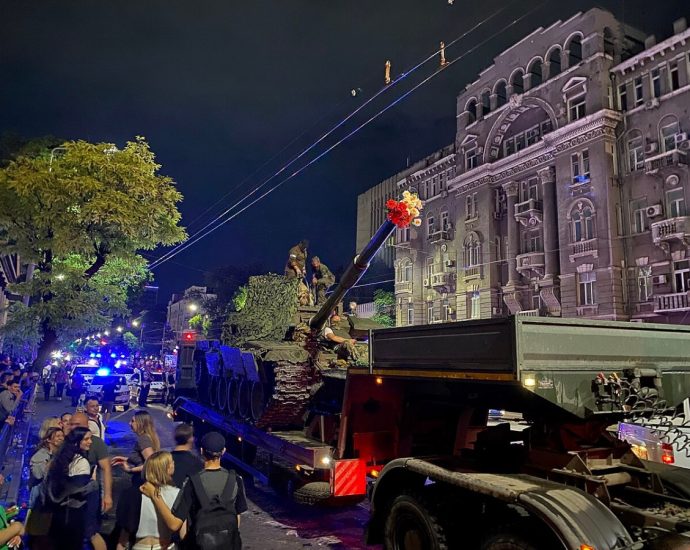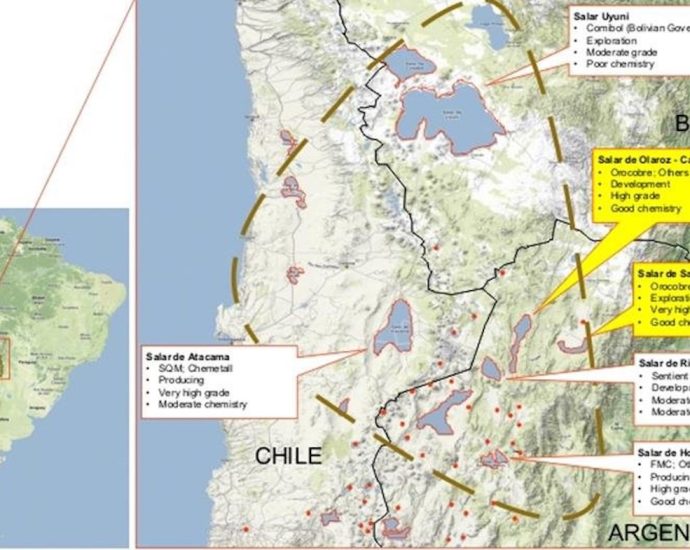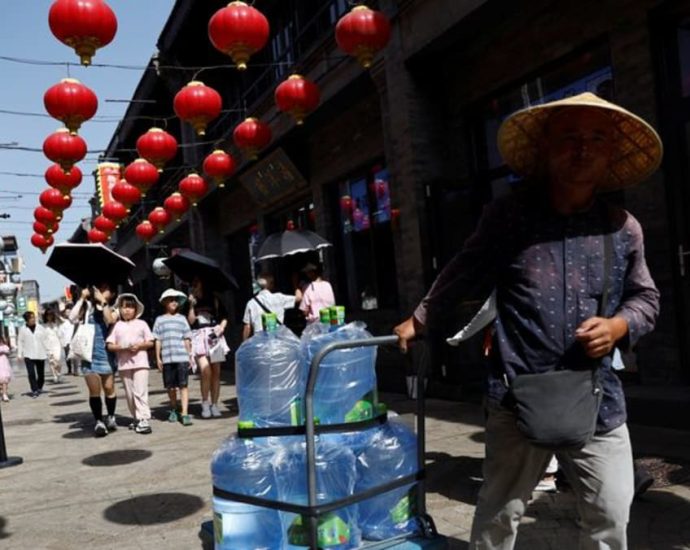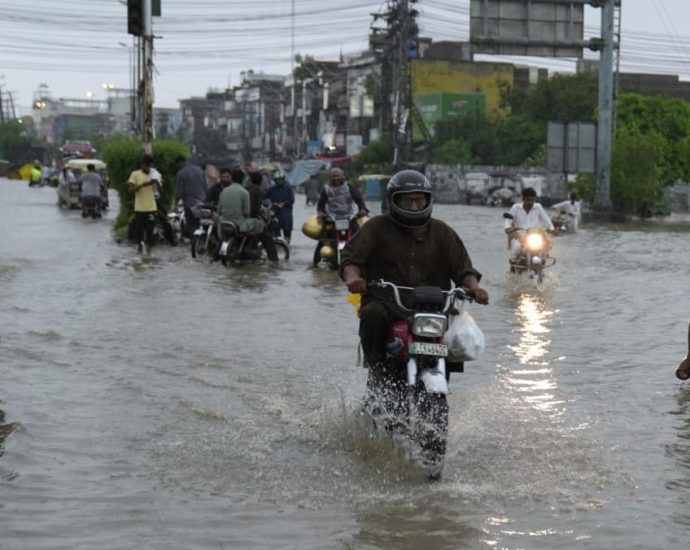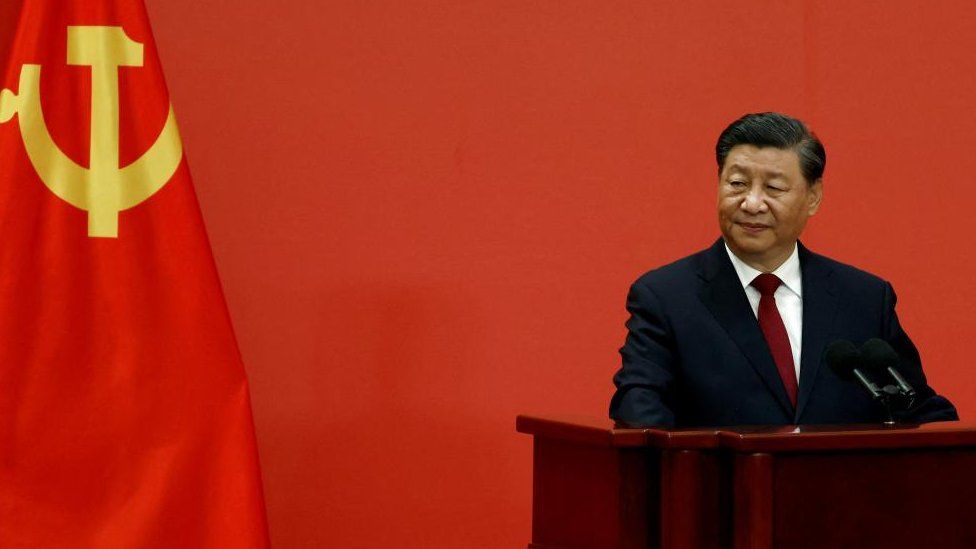Latest raid will do little to shake Jeninâs reputation

Israeli troops withdrew from Jenin on Tuesday after two days of heavy aerial bombardment and ground invasion. According to reports, 12 Palestinians were killed and more than 100 wounded in what the Israeli military described as a “counterterrorism operation.” One Israeli soldier was also reportedly killed.
The site of the latest confrontation is not new. The Jenin refugee camp, on the western edge of the town of Jenin in the north of the occupied West Bank, has often experienced violence between Israeli soldiers and Palestinian militants.
Also read: West Bank explodes in biggest Israel attack in decades
On Monday, the Israeli government said it needed to enter Jenin to arrest militants it accuses of terrorism, with Prime Minister Benjamin Netanyahu warning that the operation would not be a “one-time action.”
As a scholar of Palestinian history, I see this recent episode as the latest chapter in a much longer history of Palestinian displacement and defiance of Israeli occupation. Understanding this history helps explain why the Jenin camp in particular has become a center of Palestinian militant resistance.
Camp conditions
Jenin, an agricultural town that dates back to ancient times, has long been a center of Palestinian resistance. During the 1948 Arab-Israeli War, Arab fighters successfully pushed back Israeli attempts to capture the town.
At the end of that war, the town became a refuge for some of hundreds of thousands of Palestinian refugees who fled or were expelled from lands that became part of Israel. Jenin, along with the hilly interior of Palestine known as the West Bank, was annexed by Jordan.
The UN Relief and Works Agency established the Jenin camp in 1953, just west of the city. Since then, the agency has provided basic services to the camp’s residents, including food, housing and education.
Camp conditions have always been difficult. In the early years of the camp, refugees had to stand in long lines to receive food rations, and for decades their cramped homes lacked electricity or running water.
The Jenin camp soon became the poorest and most densely populated of the West Bank’s 19 refugee camps. And given its location near the “Green Line” – the armistice line that serves as Israel’s de facto border – camp residents who were expelled from northern Palestine could actually see the homes and villages from which they were expelled. But they were prevented from returning to them.
The rise of militancy
Since 1967, Jenin, along with the rest of the West Bank, has been occupied by the Israeli military.
The Israeli occupation of Jenin compounded the difficulties of these refugees. As stateless Palestinians, they couldn’t return home. But under Israeli occupation, they couldn’t live freely in Jenin, either.
Human-rights groups have long documented what has been described as “systematic oppression,” which includes discriminatory land seizures, forced evictions and travel restrictions.
Seeing no other path forward, many of the camp’s young refugees turned to armed resistance.
In the 1980s, groups such as the Black Panthers, which was affiliated with the Palestinian nationalist Fatah organization, launched attacks on Israeli targets in an effort to end the occupation and liberate what they saw as their lands. Throughout the first intifada – a Palestinian uprising lasting from 1987 to 1993 – the Israeli army raided the Jenin camp many times, seeking to arrest members of militant groups.
In the process, Israeli forces also sometimes demolished family members’ homes and arrested relatives. Such acts of apparent collective punishment reinforced the idea for many Palestinians that the Israeli occupation could only be ended by force.
The Oslo peace process of the 1990s – which consisted of a series of meetings between Israeli government and Palestinian representatives – led some former militants to hope that the occupation could be ended through negotiations instead.
But Jenin’s camp residents remained marginalized in the West Bank and sealed off from Israel, seeing little improvement in their lives, even after the transfer of administrative powers from Israel to the Palestinian Authority in 1995.
Independent projects like the The Freedom Theater provided some relief to the camp’s refugee children, but it was not enough to overcome the grinding poverty and violence they faced.
By the time the second intifada broke out in 2000, many of the camp’s teenagers joined militant groups. That included Freedom Theater co-founder Zakaria Zubeidi, who joined the Fatah-affiliated Al-Aqsa Martyrs Brigade. Like the youth of the 1980s, they too concluded that only armed resistance would bring an end to the occupation.
A cycle of violence?
In April 2002 the Israeli army invaded the Jenin camp, hoping to put an end to such armed groups. There were fierce clashes between Israeli soldiers and young Palestinian men in the camp, solidifying Jenin’s reputation among Palestinians as “the capital of the resistance.”
The lack of progress on peace talks since then, Israel’s illegal settlement building on occupied land, and the inclusion of hardline Israeli politicians in the government have exacerbated resentment in the camp. Polls show Palestinians increasingly support armed resistance.
Seemingly alarmed by the increase in militancy and the stockpiling of weapons in the camp, Israel dramatically stepped up its raids into the camp in 2022. It was during such a raid that Palestinian-American journalist Shireen Abu Akleh was killed by an Israeli soldier.
The latest raid, as many journalists have noted, may be the biggest operation in the camp in 20 years. But it was built on decades of resistance and militant defiance that will only increase with the latest deaths and destruction.
This article is republished from The Conversation under a Creative Commons license. Read the original article.
Wagnerâs tentacles still go deep in Africa

As the dust settles from the audacious – and swiftly aborted – attempted Wagner insurrection, the exact whereabouts of its architect is still unknown at this writing. Yevgeny Prigozhin, the brutish figure behind the paramilitary group, is meant to be somewhere in Belarus.
Still, the life – and, as someone who has so publicly crossed Vladimir Putin, perhaps eventual death – of Prigozhin is not the most important topic far from Europe.
Almost as soon as the insurrection was halted, African states began to wonder what effect the mutiny would have on the Wagner fighters in their midst. The Kremlin moved quickly to quash any talk of change, thereby demonstrating how valuable Wagner fighters are to Russia’s foreign policy.
Speaking on the Monday after the brief march on Moscow, Russian Foreign Minister Sergey Lavrov said the fighters would remain in Mali and the Central African Republic as long as they were needed – the contracts that Wagner fighters sign are, after all, between them and the government. In other countries on the continent where Wagner operates, albeit with smaller footprints, the situation will be the same.
And that is for one simple reason: However angry President Putin may be with the head of Wagner, the group’s activities in Africa are too valuable for the Kremlin to give up.
The name may change, the leadership of the group may change – but the use of private military companies to provide protection, training and raw fighting force to Russian allies is here to stay. The Kremlin may cut off the head of Wagner, but the group’s tentacles in Africa will remain.
Wagner has a presence in as many as a dozen African states, but the exact nature of its work is extremely murky.
In Mali, the group has a contract directly with the government, and is reportedly paid millions of dollars per month. In the Central African Republic, the Russian government works with the CAR, and alongside the Wagner Group. The Kremlin said last week that the government-to-government relationship would continue, but the Wagner contract was for the CAR to decide.
Wagner also has – or had, it can be tricky to be sure – a footprint in Burkina Faso, Libya and Sudan, as well as other countries.
In addition to fighters, Wagner also appears to operate a number of other companies, or at least work closely with them. In the CAR, one company linked to Wagner buys gold and diamonds; in Russia another company buys gold from the first company, which then appears to fund the paramilitaries. Similar relationships occur in other countries where Wagner troops are present.
That murkiness is precisely why the group is so valuable to the Kremlin. With tentacles that stretch across military objectives and business interests, Moscow gains the ability to influence countries while maintaining plausible deniability, and also benefit from less than transparent business practices, while evading Western attempts to sanction companies and people.
In reality, Wagner is an arm of Moscow’s foreign policy.
Little wonder then that, whatever happened in the brief “internal affair” in Russia, as the Chinese Foreign Ministry referred to the mutiny, the use of private military companies on the African continent will continue.
(Indeed, it may even benefit the Kremlin: After years of denial, Prigozhin finally admitted last year that he was behind Wagner. Whoever replaces him will be more anonymous and offer further deniability.)
Benefits – and liabilities – for African countries
Certainly the mutiny will give countries where Wagner operates pause for thought. Private contractors can be disbanded easily, or their assets in Russia frozen.
No country needs a group of trained, armed, stateless men wandering around. For those extremely reliant on Wagner, such as the CAR President Faustin-Archange Touadera, who has placed even his own personal security detail in the hands of Wagner, having their ties to Moscow hanging by such a loose thread will be a concern.
However, the benefits of Wagner flow both ways, and African countries appear to like them as much as the Kremlin.
In Mali, where Wagner fighters stepped in to fill the gap created by departing French troops, having hardened fighters without the necessity of creating new political allegiances is helpful.
In Libya and Sudan, where fighters from the group have been spotted over the past four years, Russian influence and fighting experience can be purchased and utilized, but without the political blowback that would come from soldiers in state insignia being involved.
A close adviser to the CAR’s president confirmed as much last week when he told the Financial Times that Wagner fighters were in the country with the blessing of Moscow. “If Moscow decides to withdraw them and send us the Beethovens or the Mozarts rather than Wagners, we will have them,” he said.
At the murky nexus of private military contractors controlled by the Kremlin and African states looking to quietly bolster their fighting forces, a paramilitary group by any other name would smell just as sweet.
This article was provided by Syndication Bureau, which holds copyright.
Faisal Al Yafai is currently writing a book on the Middle East and is a frequent commentator on international TV news networks. He has worked for news outlets such as The Guardian and the BBC, and reported on the Middle East, Eastern Europe, Asia and Africa. Follow him on Twitter @FaisalAlYafai,
Latin America renewables boom not just a China story
The story of renewable energy’s rapid rise in Latin America often focuses on Chinese influence, and for good reason.
China’s government, banks and companies have propelled the continent’s energy transition, with about 90% of all wind and solar technologies installed there produced by Chinese companies. China’s State Grid now controls over half of Chile’s regulated energy distribution, enough to raise concerns in the Chilean government.
China has also become a major investor in Latin America’s critical minerals sector, a treasure trove of lithium, nickel, cobalt and rare earth elements that are crucial for developing electric vehicles, wind turbines and defense technologies.
In 2018, the Chinese company Tianqi Lithium purchased a 23% share in one of Chile’s largest lithium producers, Sociedad Química y Minera. More recently, in 2022, Ganfeng Lithium bought a major evaporative lithium project in Argentina for US$962 million.

In April 2023, Brazilian President Luiz Inacio Lula da Silva and Chinese President Xi Jinping signed around 20 agreements to strengthen their countries’ already close relationship, including in the areas of trade, climate change and the energy transition.
China’s growing influence over global clean energy supply chains and its leverage over countries’ energy systems have raised international concerns. But the relationship between China and Latin America is also increasingly complicated as Latin American countries try to secure their resources and their own clean energy futures.
Alongside international investments, Latin American countries are fostering energy innovation cultures that are homegrown, dynamic, creative, often grassroots and frequently overlooked. These range from sophisticated innovations with high-tech materials to a phenomenon known as “frugal innovation.”
Chile looks to the future
Chile is an example of how Latin America is embracing renewable energy while trying to plan a more self-reliant future.
New geothermal, solar and wind power projects – some built with Chinese backing, but not all – have pushed Chile far past its 2025 renewable energy goal. About one-third of the country is now powered by clean energy.
But the big prize, and a large part of China’s interest, lies buried in Chile’s Atacama Desert, home to the world’s largest lithium reserves. Lithium, a silvery-white metal, is essential for producing lithium ion batteries that power most electric vehicles and utility-scale energy storage.
Countries around the world have been scrambling to secure lithium sources, and the Chilean government is determined to keep control over its reserves, currently about one-half of the planet’s known supply .

In April 2023, Chile’s president announced a national lithium strategy to ensure that the state holds partial ownership of some future lithium developments. The move, which has yet to be approved, has drawn complaints that it could slow production.
However, the government aims to increase profits from lithium production while strengthening environmental safeguards and sharing more wealth with the country’s citizens, including local communities impacted by lithium projects.
Latin America has seen its resources sold out from under it before, and Chile doesn’t intend to lose out on its natural value this time.
Learning from foreign investors
Developing its own renewable energy industry has been a priority in Chile for well over a decade, but it’s been a rough road at times.
In 2009, the government began establishing national and international centers of excellence – Centros de Excelencia Internacional – for research in strategic fields such as solar energy, geothermal energy and climate resilience.
It invited and co-financed foreign research institutes, such as Europe’s influential Fraunhofer institute and France’s ENGIELab, to establish branches in Chile and conduct applied research. The latest is a center for the production of lithium using solar energy.
The government expected that the centers would work with local businesses and research centers, transferring knowledge to feed a local innovation ecosystem. However, reality hasn’t yet matched the expectations. The foreign institutions brought their own trained personnel.
And except for the recently established institute for lithium, officials tell us that low financing has been a major problem.
Startup incubator and frugal innovation
While big projects get the headlines, more is going on under the radar.
Chile is home to one of the largest public incubators and seed accelerators in Latin America, StartUp Chile. It has helped several local startups that offer important innovations in food, energy, social media, biotech and other sectors.
Often in South America, this kind of innovation is born and developed in a resource-scarce context and under technological, financial and material constraints. This “frugal innovation” emphasizes sustainability with substantially lower costs.

[embedded content]
For example, the independent Chilean startup Reborn Electric Motors has developed a business converting old diesel bus fleets into fully electric buses. Reborn was founded in 2016 when the national electromobility market in Chile was in its early stages, before China’s BYD ramped up electric bus use in local cities.
Reborn’s retrofitted buses are both technologically advanced and significantly cheaper than their Chinese counterparts. While BYD’s new electric bus costs roughly US$320,000, a retrofitted equivalent from Reborn costs roughly half, around $170,000. The company has also secured funding to develop a prototype for running mining vehicles on green hydrogen.
‘Supercheap’ EV

Bolivia’s “tiny supercheap EV” developed by homegrown startup Industrias Quantum Motors is another example of frugal innovation in the electric vehicles space. The startup aspires to bring electric mobility widely to the Latin American population. It offers the tiniest EV car possible, one that can be plugged into a standard wall socket. The car costs around $6,000 and has a range of approximately 34 miles (55 kilometers) per charge.
Phineal is another promising Chilean company that offers clean energy solutions, focusing on solar energy projects. Its projects include solar systems installation, electromobility technology and technology using blockchain to improve renewable energy management in Latin America. Many of these are highly sophisticated and technologically advanced projects that have found markets overseas, including in Germany.
Looking ahead to green hydrogen
Chile is also diving into another cutting-edge area of clean energy. Using its abundant solar and wind power to produce green hydrogen for export as a fossil fuel replacement has become a government priority.
The government is developing a public-private partnership of an unprecedented scale in Chile for hydrogen production and has committed to cover 30% of an expected $193 million public and private investment, funded in part by its lithium and copper production.
Some questions surround the partnership, including Chile’s lack of experience administering such a large project and concerns about the environmental impact. The government claims Chile’s green energy production could eventually rival its mining industry.
With plentiful hydropower and sunshine, Latin America already meets a quarter of its energy demand with renewables – nearly twice the global average. Chile and its neighbors envision those numbers only rising.
Zdenka Myslikova is a postdoctoral scholar in clean energy innovation at Tufts University and Nathaniel Dolton-Thornton is an assistant researcher in climate policy at Tufts University.
This article is republished from The Conversation under a Creative Commons license. Read the original article.
Northern cities in China brace for another day of torrid heat
BEIJING: Chinese weather forecasters on Thursday (Jul 6) issued a string of heat advisories across northern parts of the country as temperatures were expected to breach 40 degrees Celsius in some areas, stressing taxed power grids. The torrid heat has gripped China for several weeks, pushing local governments to askContinue Reading
Moderna signs deal in Shanghai with view to developing mRNA medicines
SHANGHAI: Vaccine maker Moderna Inc said on Wednesday (Jul 5) it had signed a memorandum of understanding and a land collaboration agreement to work towards opportunities for it to research, develop and manufacture mRNA medicines in China. “Any medicines produced under this agreement will be exclusively for the Chinese peopleContinue Reading
Heavy monsoon rains return to Pakistan a year after deadly floods
ISLAMABAD: Heavy monsoon rains lashed Pakistan on Wednesday (Jul 5), causing deaths, flooding roads and disrupting lives in areas where residents already were struggling to recover from floods last summer that affected 33 million people and killed 1,739, officials said. At least 18 people have died in weather-related incidents sinceContinue Reading
Walkway victim to file complaint

The family of a woman who lost her left leg after it was caught in a moving walkway at Don Mueang Airport last Thursday will have their lawyer file a complaint with the police.
The 57-year-old victim, whose identity has yet to be made public, fell over on the moving walkway as she went to the gate for her flight to Nakhon Si Thammarat.
Authorities believe the force of the fall dislodged the walkway’s safety cover, resulting in the woman’s leg being caught in the walkway’s internal mechanisms.
The victim’s son, Krit Kittirattana, writing on Facebook on Tuesday, said his mother’s condition was stable. She had been treated at a hospital ICU since the accident.
Mr Krit said his mother is mostly doing well emotionally. She has started to allow visitors and seems more relaxed but is still experiencing bouts of intense fear. Mr Krit said that his mother wakes up in fright during the night.
He said the family had sought a psychotherapist’s advice to treat her.
“We are trying to help her maintain her self-esteem as much as possible so that she does not feel that she has lost her self-worth and can resume her normal life again,” Mr Krit wrote.
He also said the family had authorised their lawyer to file a complaint with the police over the accident and contact investigation officers so they can question his mother directly.
Earlier on July 2, Mr Krit wrote on Facebook that the family wants to know if there are any eyewitness at the scene who could provide details about the incident in court.
Don Muang police superintendent Pol Col Adirek Tongkeamkeaw said on Tuesday that police are examining CCTV footage from the airport.
The airport, meanwhile, is checking on other walkways in the complex to ensure passenger safety.
Can ‘good cop’ Janet Yellen help fix US-China relations?
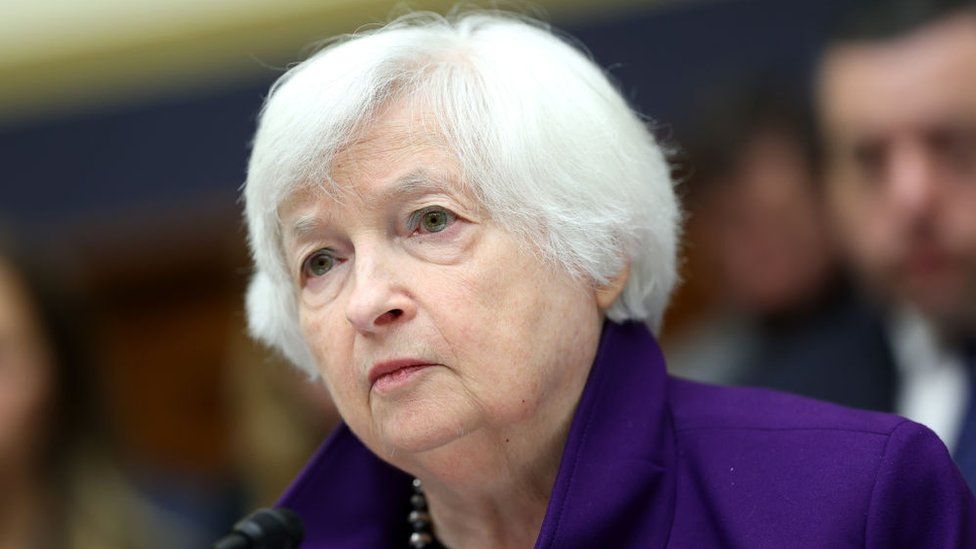 Getty Images
Getty ImagesUS Treasury Secretary Janet Yellen is due to arrive in China as part of high-stakes attempts to rebuild bridges between the world’s two biggest economies.
It is the second visit to Beijing by a senior Washington official in as many months and comes after the countries’ relationship nose-dived this year.
The list of points of contention between the US and China ranges from Taiwan and Ukraine to national security and an ongoing trade dispute.
The visit also comes just days after Beijing said it would curb exports of two key materials used to make computer chips.
Ms Yellen’s recent comments that the two economies can work together could be crucial to the trip, which will include her first talks with China’s new Vice Premier He Lifeng.
Ahead of the visit, the US emphasised the importance for the countries “to responsibly manage our relationship, communicate directly about areas of concern, and work together to address global challenges”.
As part of the ongoing efforts to ease tensions, Ms Yellen also met China’s ambassador to the US Xie Feng on Monday for what was described by both sides as a “frank and productive discussion”.
However, “expectations should be kept low for the Yellen visit,” Wendy Cutler, vice president at US-based think tank the Asia Society Policy Institute, told the BBC. “She is not in a position to repair ties nor respond to Chinese requests to lift export controls or tariffs.”
This latest trip to China comes just weeks after US Secretary of State Antony Blinken’s visit to Beijing, when he met President Xi Jinping and foreign minister Qin Gang.
Mr Blinken was the highest-ranking Washington official to visit the Chinese capital in almost half a decade.
The meetings were seen as a key test of whether the two countries could stop their relationship deteriorating further.
At the end of his trip Mr Blinken said that, although there were still major issues between the US and China, his “hope and expectation is we will have better communications, better engagement going forward.”
However, the next day President Joe Biden referred to Mr Xi as a “dictator”, which triggered protests from Beijing. While analysts said Mr Biden’s comment was unlikely to have a major negative effect, it was also widely seen as not helping matters.
In another sign that the trade dispute between the two countries is far from being resolved, China this week announced it was tightening controls over exports of two materials crucial to producing computer chips. From next month, special licences will be needed to export gallium and germanium from China, which is the world’s biggest producer of the metals.
The move follows Washington’s efforts in the past year to curb Chinese access to some advanced computer chips. In October, Washington announced it would require licences for companies exporting chips to China using US tools or software, no matter where they are made in the world.
The US and China face a complex set of issues, said Priyanka Kishore from the business forum IMA Asia.
“The official rhetoric and visits by senior diplomats indicate a desire to establish a working political relationship between the two countries,” she added. “But the actions suggest otherwise, with the tit-for-tat policies dominating.”
During meetings with her counterparts in Beijing Ms Yellen is expected to make clear that the US will continue to defend human rights and its national security interests.
However, she is also expected to emphasise Washington’s willingness to work with Beijing on issues, including climate change and the problems faced by heavily-indebted countries.
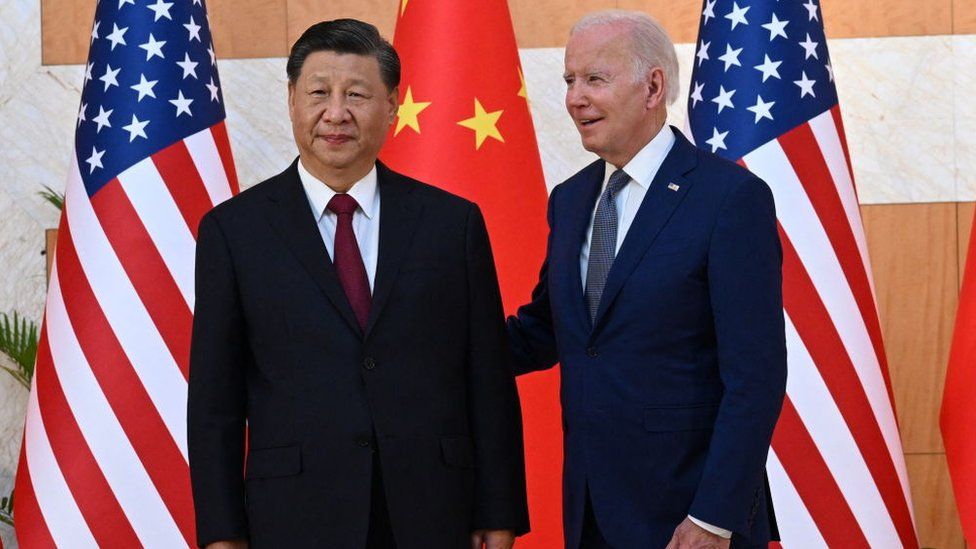
While some high-profile figures have called for the US to completely break economic ties with China, Ms Yellen will take a more placatory approach. She is expected to tell her counterparts in Beijing that Washington does not intend to decouple the two economies.
This is in line with her worldview, which is more globalist than some of her predecessors, as she outlined in a speech earlier this year: “A full separation of our economies would be disastrous for both countries. It would be destabilising for the rest of the world.”
She is also likely to be seen as a “good cop” compared to Mr Blinken, former International Monetary Fund chief economist Ken Rogoff told the BBC.
In his role as secretary of state, Mr Blinken had to raise some hard issues, such as Taiwan and Ukraine, Mr Rogoff said.
However, Mr Rogoff cautioned that this should not be taken as a sign that Ms Yellen will be soft on Beijing as she is likely to press Chinese officials on a number of issues, including intellectual property laws and access to markets.
Also, while some figures on both sides of the US-China divide talk of splitting away from one another, the reality of the interdependence can be seen in trading figures.
Trade between the two countries grew in 2022 for the third year in a row, with official figures showing China exported more than $536bn worth of goods to the US last year, while $154bn of goods went in the other direction.
But even as Washington and Beijing try to resolve their differences, the spectre of the US presidential election looms.
“If there is a second Biden administration beginning after 2024, on the economic front I expect loosening of many of the Trump-era trade sanctions and tariffs, in particular ones less related to high technology sectors,” Professor Eric Harwit of the Department of Asian Studies at the University of Hawaii said.
“However, if Donald Trump wins the 2024 election, all bets are off.”
Related Topics
Richie Koh gets fluent in Hokkien for new dialect drama Whatever Will Be, Will Be

Koh, who is Teochew, told CNA Lifestyle in a previous interview that his Hokkien isn’t particularly strong, so he’s had to work hard to make sure he nails all his lines.
We imagine it’s challenging to act in a language that’s not your first, but we’re also sure he gets lots of help from his fellow cast members, especially Hokkien veterans like Richard “Limpeh” Low.
Will Koh’s Hokkien pass muster? Well, whatever will be, will be, so we’ll have to watch to find out.
Catch Whatever Will Be, Will Be starting Jul 21, Fridays at 11.30am on Channel 8.
Suchatvee asked to vie for top Dems’ job

Suchatvee Suwansawat, the Democrat Party’s Bangkok governor candidate, has been asked to stand in the party leadership contest, although he has not decided whether to put his name in the hat, according to a source in the Democrats.
He was wooed to enter the leadership race set for Sunday by members affiliated to Chalermchai Sri-on, former party secretary-general. Mr Suchatvee was approached for the role despite having earlier declined to vie for the top party seat.
Other potential candidates include Watanya Bunnag, who heads the party’s working group on political innovations, Det-it Khaothong, the Democrats’ acting secretary-general, and former Democrat MP Issara Seriwatthanawut.
On his Facebook account, Mr Issara said he had no desire to compete for the leadership role or any party executive post.
So far, Alongkorn Ponlaboot, the acting Democrat deputy leader, is the only member who has stepped forward to announce his bid to run.
There are also steadfast supporters in the Democrats’ northeastern chapters pushing for former party leader Abhisit Vejjajiva to return.
All 48 branches and representatives of the Democrats in the Northeast have issued a statement supporting Mr Abhisit for a second term as party leader.
Mr Abhisit, also a former prime minister, led the Democrats from March 2005 to March 2019.
Shortly after the 2019 general election, he relinquished the party leadership to face responsibility for the Democrats’ crushing defeat in the polls.
The statement supporting Mr Abhisit’s party leadership was released at a gathering of the Democrats’ northeastern members in Khon Kaen on Tuesday.
The members made known their stance ahead of the party’s assembly on Sunday to elect a new executive board and a new party leader to replace Jurin Laksanawisit.
The executive board was terminated when Mr Jurin resigned as party leader after he was unable to fulfill his promise to land at least 25 MPs in the May 14 election.
Unofficial poll results indicated the Democrats would capture fewer than 25 MP seats. The Election Commission (EC) eventually confirmed the party won 25 — although that came after Mr Jurin resigned.


